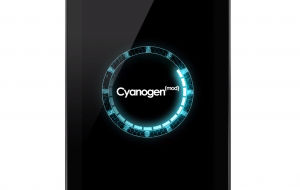CyanogenMod is a firmware replacement for tablets and mobile phones using Android operating system. It’s open source software. It offers many new features to devices which are not implemented or removed by vendors because of different reasons like security or hardware rapport. Main features of CyanogenMod are FLAC audio codec support, USB tethering, OpenVPN client, native theming support and various new features to specified devices. Also it releases some new app permissions to use built-in apps with more features. According to latest announcement, against warrant void in installation, 3.6 million active installs are made over CyanogenMod. How many CyanogenMod releases are there for Android?
When HTC Dream is released in 2008, some technology experts noticed that there’s a way to access Android’s Linux-based subsystem which is now known as Android’s Linux-based subsystem. It made possible to modify or totally replace operating system on devices based on Android. An Android user Steve Kondik who is known as Cyanogen stopped modifying Android operating system and released a replacement firmware which is known as CyanogenMod. Firmware gained popularity in short period and CyanogenMod Team started to release new versions.
Till the CyanogenMod 6, there were 3 main versions but they were adding only some features like FLAC support, USB tethering support or pinch zoom for Browser.
CyanogenMod 6 is released for Android 2.2 Froyo. Many devices like the Nexus One, Evo 4G, HTC Magic and Motorola Droid were possible to replace their firmware with CyanogenMod 6. CyanogenMod Team released a candidate of CyanogenMod 6 in 11 July 2010 and then released a stable version in 28 August 2010.
CyanogenMod 7 is released for Android 2.3 Gingerbread. Steve Kondi wrote many parts of new firmware and also xda-developers community helped him in the developments like new dialer, browser and other features. He also added many new software like BusyBox to CyanogenMod 7. CyanogenMod 7 is started to be produced after Google released source codes of Android 2.3 Gingerbread and fourth candidate pack supported Nook Color. First public version is released in 11 April 2011 for Android 2.3.3. Then Google released Android 2.3.4 and CyanogenMod Team updated their firmware to CyanogenMod 7.1 and then CyanogenMod 7.2. CyanogenMod 7 released some new developments like predictive phone dialer, ICS animation backports and lockscreen updates.

CyanogenMod 8 is planned to be produced and released for Android 3.x Honeycomb but Google didn’t release source codes of Android 3.x Honeycomb. It was only possible when Google released Android 4.x and many codes of Android 3.x Honeycomb was in it. CyanogenMod 8 is not released and CyanogenMod went to CyanogenMod 9 from CyanogenMod 7 directly.
CyanogenMod 9 is released for Android 4.0 Ice Cream Sandwich. It’s announced on the day Google released source codes of Android 4.0.1. It was a big chance that CyanogenMod 8 is not produced and it gave time to CyanogenMod Team for rethinking on development of Android. In the last days of 2011, a beta version of CyanogenMod 9 is released for only Galaxy S and Nexus S. Team announced that they finished CyanogenMod 9 in 9 August 2012. Firmware is released but didn’t stay long because Google released Android 4.1 sooner than expectations.
CyanogenMod 10 is first announced in July 2012 and development was for Android 4.1 Jelly Bean. Public release of CyanogenMod 10 is made on November 13, 2012. Till the public release, many beta releases are released and they are called in “M” series.
Now CyanogenMod Team is working on CyanogenMod 10.1. It will be possible for Android 4.2 Jelly Bean. Nightly versions of CyanogenMod 10.1 is possible now but there’s no public version.





Appreciate you sharing, great blog.Thanks Again. Cool.